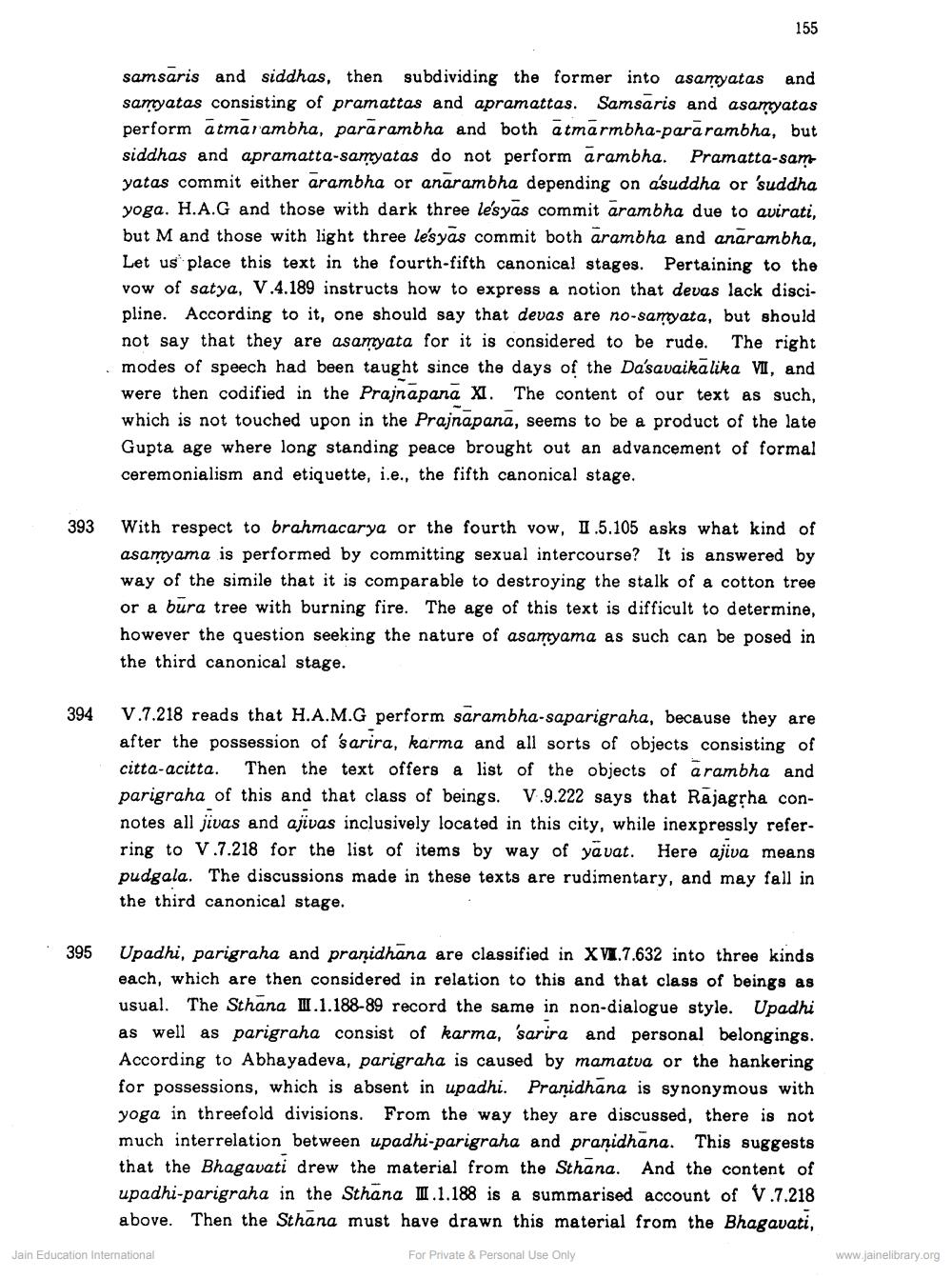________________
155
samsaris and siddhas, then subdividing the former into asamyatas and samyatas consisting of pramattas and apramattas. Samsaris and asamyatas perform atmarambha, pararambha and both atmarmbha-pararambha, but siddhas and apramatta-samyatas do not perform ārambha. Pramatta-sam yatas commit either arambha or anarambha depending on asuddha or 'suddha yoga. H.A.G and those with dark three le'syas commit arambha due to avirati, but M and those with light three le'syas commit both arambha and anarambha, Let us place this text in the fourth-fifth canonical stages. Pertaining to the vow of satya, V.4.189 instructs how to express a notion that devas lack discipline. According to it, one should say that devas are no-samyata, but should not say that they are asamyata for it is considered to be rude. The right modes of speech had been taught since the days of the Da'savaikālika VI, and were then codified in the Prajnapana XI. The content of our text as such, which is not touched upon in the Prajnapana, seems to be a product of the late Gupta age where long standing peace brought out an advancement of formal ceremonialism and etiquette, i.e., the fifth canonical stage.
393 With respect to brahmacarya or the fourth vow, 1.5.105 asks what kind of
asamyama is performed by committing sexual intercourse? It is answered by way of the simile that it is comparable to destroying the stalk of a cotton tree or a bura tree with burning fire. The age of this text is difficult to determine, however the question seeking the nature of asamyama as such can be posed in the third canonical stage.
394
V.7.218 reads that H.A.M.G perform sarambha-saparigraha, because they are after the possession of 'sarira, karma and all sorts of objects consisting of citta-acitta. Then the text offers a list of the objects of arambha and parigraha of this and that class of beings. v.9.222 says that RajagȚha connotes all jivas and ajivas inclusively located in this city, while inexpressly referring to V.7.218 for the list of items by way of yavat. Here ajiva means pudgala. The discussions made in these texts are rudimentary, and may fall in the third canonical stage.
395
Upadhi, parigraha and pranidhana are classified in XVI.7.632 into three kinds each, which are then considered in relation to this and that class of beings as usual. The Sthana 11.1.188-89 record the same in non-dialogue style. Upadhi as well as parigraha consist of karma, sarira and personal belongings. According to Abhayadeva, parigraha is caused by mamatva or the hankering for possessions, which is absent in upadhi. Pranidhana is synonymous with yoga in threefold divisions. From the way they are discussed, there is not much interrelation between upadhi-parigraha and pranidhana. This suggests that the Bhagavati drew the material from the Sthana. And the content of upadhi-parigraha in the Sthana 11.1.188 is a summarised account of V.7.218 above. Then the Sthana must have drawn this material from the Bhagavati,
Jain Education International
For Private & Personal Use Only
www.jainelibrary.org




